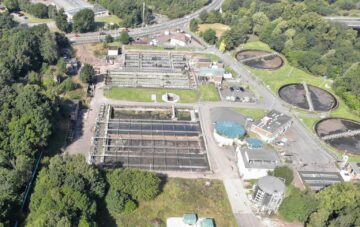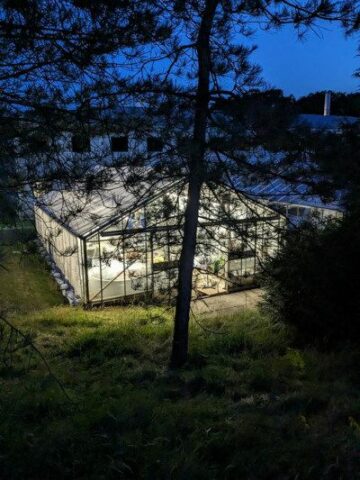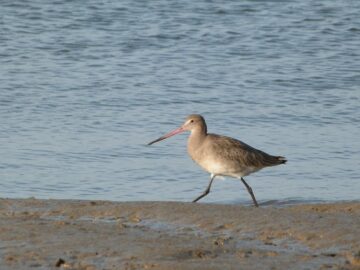

A new report by conservation charity Buglife appears to find that half of the UK’s most special species are at risk of global extinction.
The report brings together knowledge on twenty invertebrate species which are endemic to Great Britain. Endemic species are those which are only found in Britain, and nowhere else in the world – they are the crown jewels of our biodiversity. They are species that we have an international responsibility to look after, to ensure that future generations can enjoy them.
The twenty special species include the Celtic Woodlouse (Metatrichoniscoides celticus) which is only found in Wales and the West of England, the Lundy Cabbage Flea Beetle (Psylliodes luridipennis) particular to Lundy Island in the Bristol Channel, and the Manx Shearwater Flea (Ceratophyllus fionnus) – which lives in the burrows of Manx Shearwater on the Island of Rum in Scotland.
Worryingly, the review has found that over half of Britain’s endemics are threatened with global extinction, and some may have already been lost forever. The Ivell’s Sea Anemone (Edwardsia ivell) – an animal that inhabits coastal lagoons – has not been seen since 1983 and so may already be extinct. Across the country, planning developments threaten to destroy some of the last known habitats for species such as Fonseca’s Seed Fly (Botanophila fonsecai), threatened by a golf course development in Scotland, or the Horrid Ground-weaver Spider (Nothophantes horridus), threatened by a housing development in Plymouth.
Urgent action is required to prevent our endemic species from being lost forever. Further research and monitoring is needed to determine how and where these species survive. Many are so poorly known that we don’t even have a photo of them. It is also vital that the important places for our threatened endemics are properly protected. The current protected area network doesn’t sufficiently cover our most threatened species and many protected areas aren’t managed with these special species in mind.
Craig Macadam, Conservation Director at Buglife, and author of the report, said “Our report highlights some of Britain’s lesser known wildlife. The high proportion of these special species at risk of extinction is really shocking. Extinction is forever, there is no turning back. The UK has an international responsibility to prevent the extinction of our endemic species. It is vitally important that these species, and the special places that call them home, are protected from harm and managed in the right way to protect and enhance their wildlife riches.”
- SEO Powered Content & PR Distribution. Get Amplified Today.
- PlatoData.Network Vertical Generative Ai. Empower Yourself. Access Here.
- PlatoAiStream. Web3 Intelligence. Knowledge Amplified. Access Here.
- PlatoESG. Carbon, CleanTech, Energy, Environment, Solar, Waste Management. Access Here.
- PlatoHealth. Biotech and Clinical Trials Intelligence. Access Here.
- Source: https://envirotecmagazine.com/2023/11/07/review-finds-half-of-britains-crown-jewels-of-nature-at-risk-of-extinction/
- :has
- :is
- :not
- :where
- a
- across
- Action
- After
- already
- also
- an
- and
- animal
- appears
- ARE
- AREA
- areas
- AS
- At
- author
- back
- banners
- BE
- been
- being
- Brings
- bristol
- britain
- by
- call
- CAN
- Channel
- Charity
- coastal
- CONSERVATION
- content
- country
- course
- cover
- credit
- Crown
- Current
- destroy
- Determine
- Development
- developments
- Director
- disabled
- Doesn’t
- Dont
- either
- else
- endemic
- England
- enhance
- enjoy
- ensure
- Envirotec
- Even
- extinction
- Find
- finds
- For
- forever
- found
- from
- further
- future
- generations
- Global
- golf
- great
- Great Britain
- Half
- harm
- Have
- High
- highlights
- Home
- housing
- How
- HTTPS
- image
- important
- in
- include
- International
- island
- IT
- John
- jpg
- knowledge
- known
- Last
- lesser
- Lives
- Look
- lost
- managed
- many
- May..
- mind
- monitoring
- most
- needed
- network
- New
- no
- None
- of
- on
- only
- or
- our
- over
- particular
- photo
- Places
- planning
- plato
- Plato Data Intelligence
- PlatoData
- prevent
- properly
- proportion
- protect
- protected
- qualified
- really
- report
- required
- research
- responsibility
- review
- right
- Risk
- Said
- Scotland
- SEA
- seed
- seen
- since
- So
- some
- special
- such
- survive
- that
- The
- the UK
- The West
- the world
- their
- Them
- There.
- These
- they
- this
- those
- threaten
- to
- together
- Turning
- twenty
- Uk
- vital
- Way..
- we
- West
- which
- Wildlife
- with
- world
- zephyrnet












